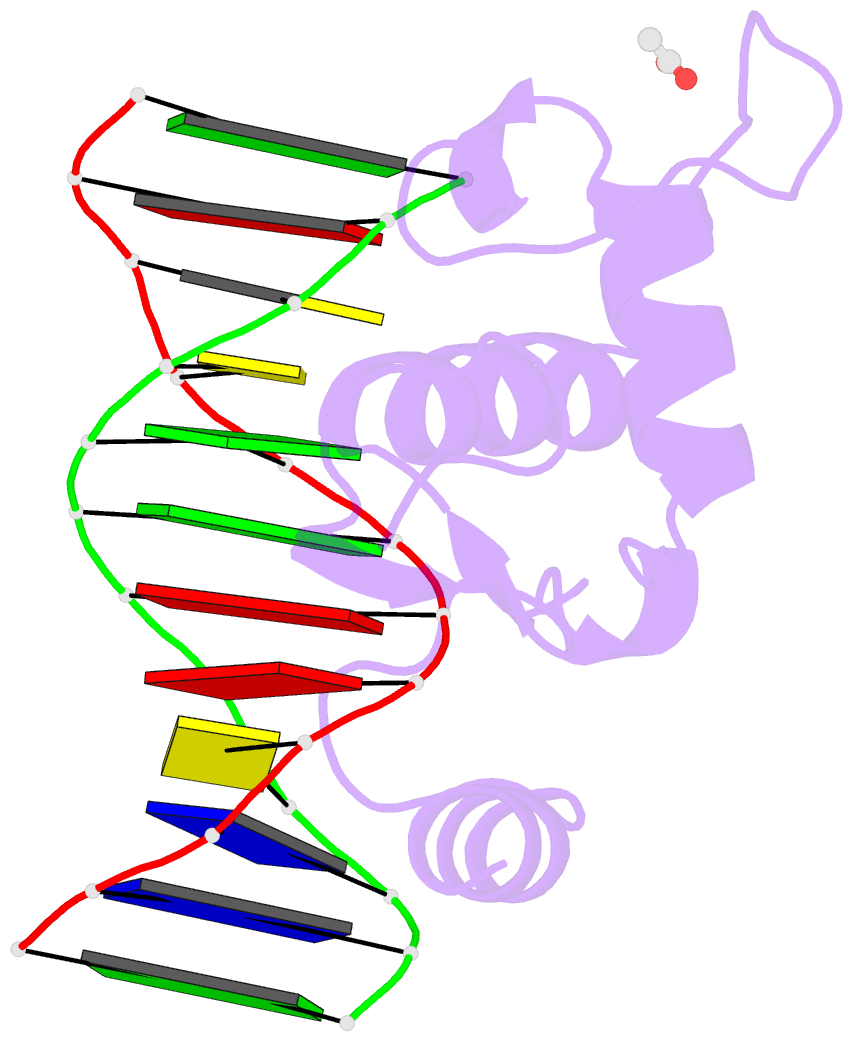Summary information and primary citation
- PDB-id
- 2a66; SNAP-derived features in text and JSON formats;
DNAproDB
- Class
- transcription-DNA
- Method
- X-ray (2.2 Å)
- Summary
- Human liver receptor homologue DNA-binding domain (hlrh-1 dbd) in complex with dsDNA from the hcyp7a1 promoter
- Reference
- Solomon IH, Hager JM, Safi R, McDonnell DP, Redinbo MR, Ortlund EA (2005): "Crystal Structure of the Human LRH-1 DBD-DNA Complex Reveals Ftz-F1 Domain Positioning is Required for Receptor Activity." J.Mol.Biol., 354, 1091-1102. doi: 10.1016/j.jmb.2005.10.009.
- Abstract
- The DNA-binding and ligand-binding functions of nuclear receptors are localized to independent domains separated by a flexible hinge. The DNA-binding domain (DBD) of the human liver receptor homologue-1 (hLRH-1), which controls genes central to development and metabolic homeostasis, interacts with monomeric DNA response elements and contains an Ftz-F1 motif that is unique to the NR5A nuclear receptor subfamily. Here, we present the 2.2A resolution crystal structure of the hLRH-1 DBD in complex with duplex DNA, and elucidate the sequence-specific DNA contacts essential for the ability of LRH-1 to bind to DNA as a monomer. We show that the unique Ftz-F1 domain folds into a novel helix that packs against the DBD but does not contact DNA. Mutations expected to disrupt the positioning of the Ftz-F1 helix do not eliminate DNA binding but reduce the transcriptional activity of full-length LRH-1 significantly. Moreover, we find that altering the Ftz-F1 helix positioning eliminates the enhancement of LRH-1-mediated transcription by the coactivator GRIP1, an action that is associated primarily with the distantly located ligand-binding domain (LBD). Taken together, these results indicate that subtle structural changes in a nuclear receptor DBD can exert long-range functional effects on the LBD of a receptor, and significantly impact transcriptional regulation.





